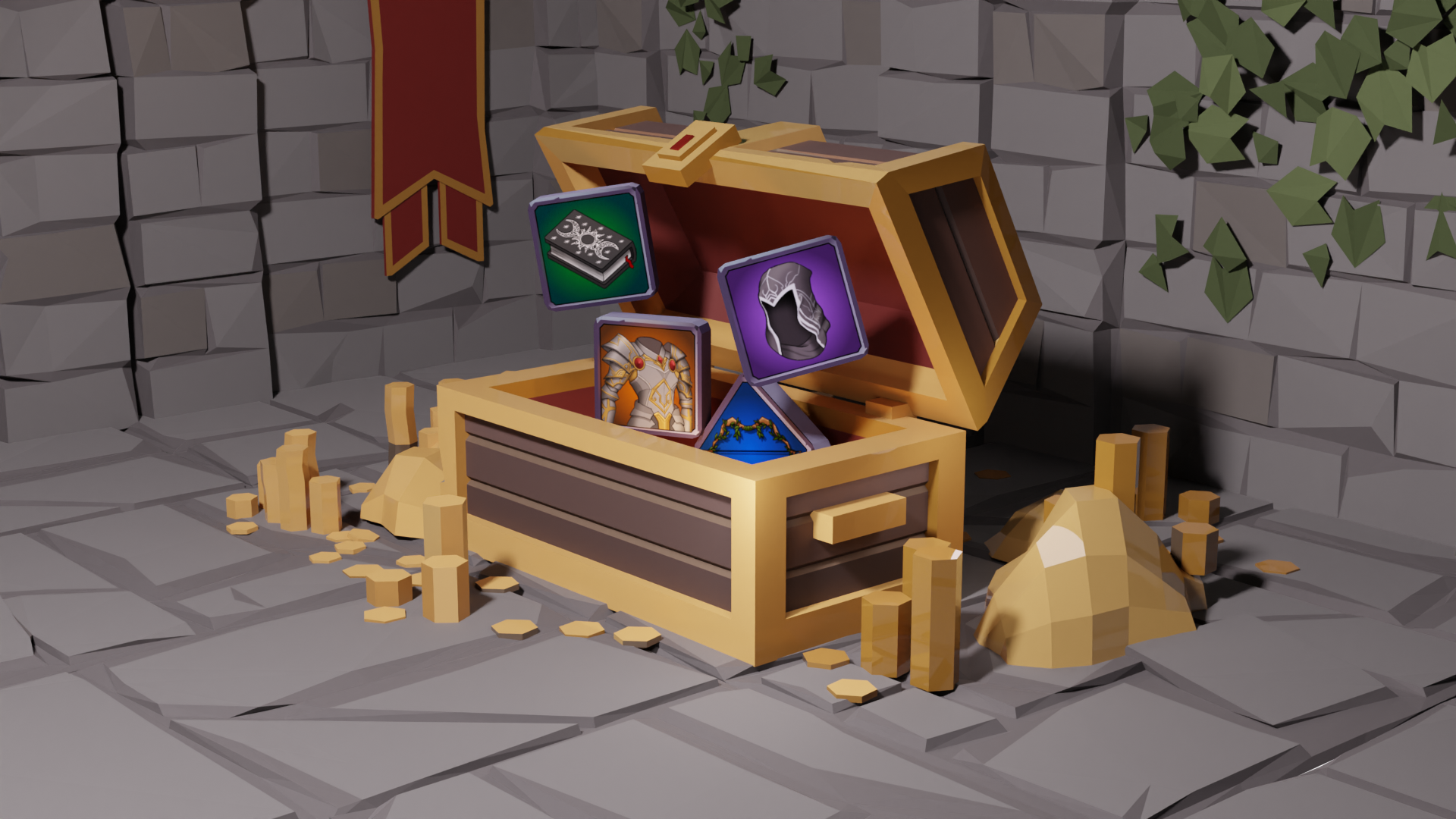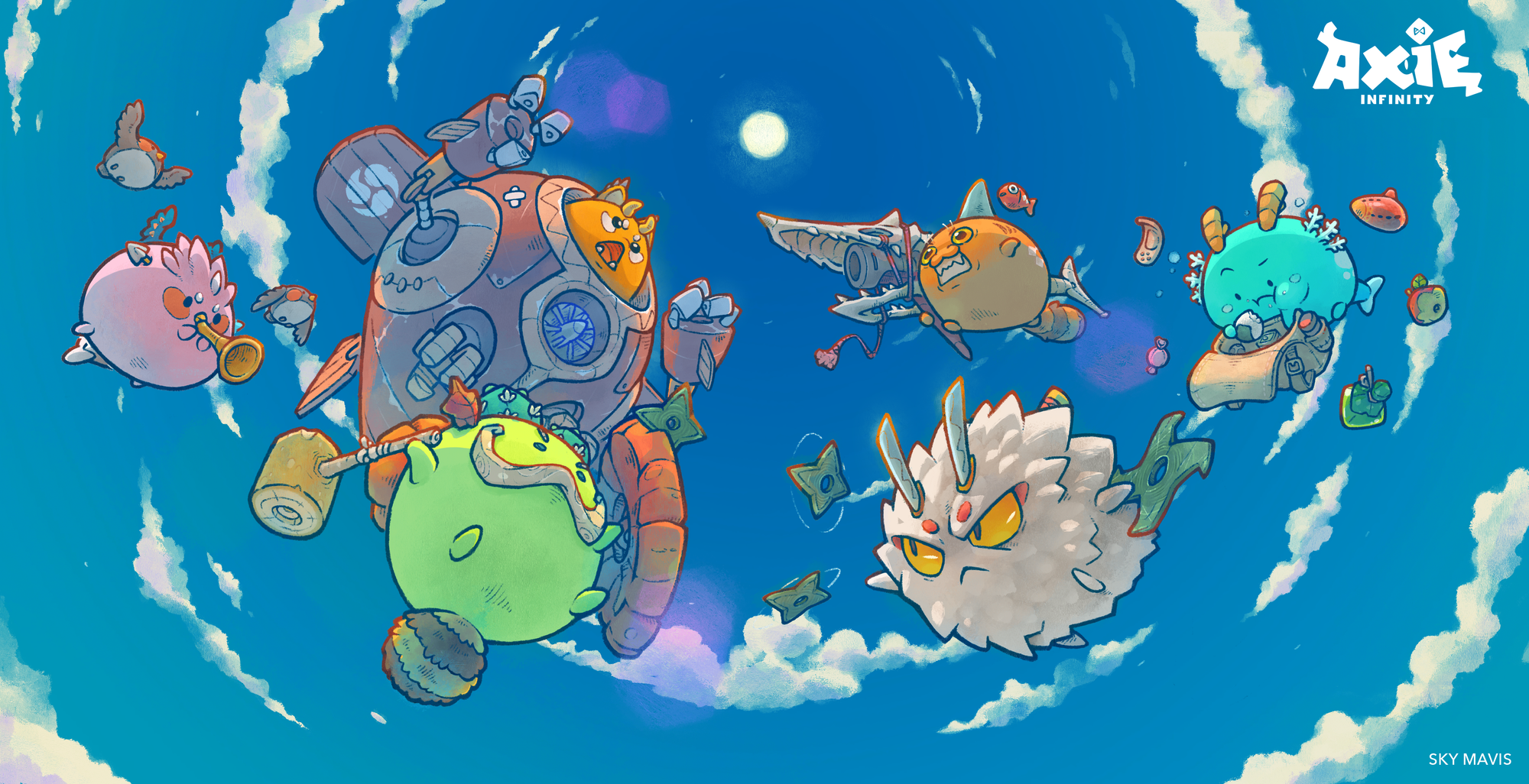Most industries change over time. Gaming is no exception to that rule. Whether it's new genres, technical innovation through game engines, or simply the next breakthrough in graphics cards, and both the gaming experience and development processes are affected by that change.
With this article, I would like to talk about an innovative technology and how it affects the gaming industry. We are talking about: Blockchain and everything around it.
Blockchain And The Gaming Industry
When we talk about blockchain gaming, there are two major components to be taken into account.
Blockchain - In The Context Of A Game
A blockchain is a distributed database that is shared among a network of computers. The main difference to a traditional database is that data is stored decentralized, with maximum transparency and secured with state-of-the-art encryption that ensures that data, once stored, is unchangeable. This is unlike a traditional database which stores data on a centralized server and you have to trust the operator to keep your data secure.

However, due to the current limitations in the area of transaction speed, one has to be careful which data to store on a blockchain. Although breakthroughs and steady progress has been made on the transaction speed problem, there still is no blockchain that is capable of efficiently persisting data in real-time. Therefore, it makes sense to separate actual gameplay and the item economy of a game, at least in our opinion. This is why storing in-game items, externally, on a blockchain as so called NFTs (Non-fungible tokens) is how our approach works.
NFTs (Non-fungible tokens)
It seems to me that there are exactly two types of people: Those who hype NFTs and those who demonize them (in the worst case) as pure scam. And I would argue that neither side is wrong nor right. So let's talk about NFTs from an objective and rational point of view.
What Are They Exactly?
From a technical point of view, an NFT is nothing more than a token (or, in the most abstract sense, simply an ID) that is, first and foremost, completely void of value. Unlike a conventional currency, which is fungible, NFTs are the exact opposite. Every NFT is unique and not directly exchangable with another.
Ownership
NFTs are stored on the blockchain in wallets of users. This means that only the user that has the private key to his wallet has access to these tokens. This maximizes security and ensures ownership.
Value Through Utility
Talking about the actual value of an NFT, it gets a little more complex. As mentioned before, every NFT on its own is worthless. The keyword that determines the value of an NFT is: Utility. This means that the more you can do with an NFT, the more valuable it becomes. Let's dive into some examples to explain it further.
Use-Case: (Digital) Art
At the moment, countless NFT collections are shooting out of the ground. For all those who are unfamiliar, such collections are usually a bunch of pictures that are only available in a limited amount. Through good marketing and scarcity, these pictures are traded for ever higher prices.
The utility here is quite clear: Ownership. By convincing people that they can buy exclusive editions of pictures, coupled with various promises of what you can do with them in the future, you create a lot of hype and fear of missing out (FOMO).
But there is a problem with ownership as a utility: The purchased picture is not unique just because you bought it as an NFT. The most important thing to understand is that you are not buying the picture, you are buying an NFT. An NFT is NOT a picture. A NFT, as already mentioned, is only a token/ID. No one is preventing anyone else from creating a copy of the "unique" picture pretending to be the original. Therefore, from our point of view, pure art NFTs have very limited utility and ultimately leave most of the potential of the NFT-technology untapped.
Use-Case: Gaming
In the field of gaming, however, things look quite different. Here, for example, the NFTs can be used as in-game items which is an actual utility besides the pure ownership. But still, the same principle applies: The player owns only the NFT and not the actual in-game item. But the utility is much more versatile than in the above described use-case of art. The separation of NFT and utility is absolutely crucial for understanding the potential of this technology.
The fact that those NFTs have a native utility within a game, is another massive difference to pure art NFTs. Therefore, the value of the NFT is paired to the benefits the item brings within a game. In addition, an NFT is not bound to only one game, the utility can be extended almost indefinitely by integrating it into additional games. From there the utility can be very versatile as the implementation can vary from game to game.

Since an NFT does not represent a actual in-game item, but only one part of a puzzle, it can easily be integrated into another game. There, the NFT can represent a completely different in-game item. For example, what works and looks like a sword in one game might become a machine gun or armor in another. The possibilities are endless.
Think about all the treasures collected in a game, the hours spend, all the sweat and blood raiding bosses and collecting the best possible loot. Wouldn't it be nice to move a part or your complete in-game furtune from Lost Ark to this newly released MMO which might also be interesting. With in-game items as NFTs it is possible to do just that, gaining a little extra boost on your new adventure.
Benefits of Blockchain Gaming
The main advantages of blockchain gaming are primarily on the player side. Players can be assured that the treasures they collect in-game are securely stored on the blockchain to which nobody except themselves have access. Even if the studio is discontinuing a game, the information stored on the blockchain (NFT) isn’t lost, which means there is nothing stopping the community from spinning up their own game servers and continuing right where they left. Of course, the blockchain also provides an easy way for players to sell their NFTs and tokens.
Developers on the other hand profit from a standardized method of storing crucial information which enables a simpler way to build symbiotic partnerships between different projects. This means that if a new indie studio integrates existing NFTs from another game in their own project, the initial community building is a little less time consuming as opposed to starting completely from scratch, because players can transfer their existing progress from one game to another (as elaborated above). For example if someone put years of time into one game like World of Warcraft, he probably wouldn't switch to Guildwars 2 just like that, only because he would have to start all over again and his time invested so far is only worth something in WoW. But, if it would be possible to move their progress in form of in-game items to Guildwars 2, they could experience the best of two worlds and then decide if it is worth switching with all the progress made on the previous game.
Additionally, there are new fundraising opportunities for indie studios. The most difficult phase of an indie game studio is the start. One is always dependent on external funding or publishers that help the studio survive while developing their initial game. Entering the blockchain space unlocks access to a new way of funding: Tokensales. Instead of selling equity to an investor or onboarding a publisher that takes most of the profit, studios can create their own tokens that they sell in advance (if designed correctly of course).
On the monetization side, developers have new ways of generating profit. Instead of adding ads to a game (which every player hates) or selling random skins that are just in the game because the studio needs to earn money (just to name a few models), with blockchain studios can turn their in-game currency into a real currency with real value. That way they don’t need to rely on fiat transactions to earn their share. Instead, they can profit by taking a share of the item economy of a game directly. This means the developers only earn something if the players like the game and play it. Which is a win-win situation for both parties.
Play2Earn - Current State of Blockchain Gaming
Blockchain games have been around for quite a while now. Those games have been categorized as so called Play2Earn games. We see this approach as the next step from common gaming that has already influenced the industry a lot. However, we are far from satisfied with the current state of play and believe that Play2Earn is only an intermediate step for the industry that still needs to be completed before mass adoption can occur.
Current Problems We See
The main problem can be derived directly from the name of the genre. Play TO earn something, indicates that the main incentive to play such games is profit. There are entire industries and ecosystems that are economically based on that. In the eastern part of the world, such games are already partially used as a substitute for conventional income. That doesn't necessarily sound bad at first, but it usually leads to the fact that the game experience comes far too short and the focus is mainly placed on reward mechanisms instead of, as it should be in a game, on good game design and fun. And since the main target group is the crypto scene, technical knowledge and often even an initial investment (in crypto) are required before you can actually start playing.
Additional Problems Using The Example Of Axie Infinity
Axie Infinity is without a doubt the most successful and well-known Play2Earn game out there. However, besides the lack in gameplay experience, there are two big problems we would like to talk about.

- Ethereum as blockchain for a game
So far, Ethereum is the second largest blockchain, at least from the perspective of market capitalization and number of projects launched so far. The reason for this is relatively simple: Ethereum was the first blockchain to implement smart contracts, making it possible to build more complex applications on a blockchain.
Unfortunately, Ethereum has several problems that currently make it impossible to implement blockchain gaming in a reasonable way. Extremely high gas costs and relatively long transaction times (12-14 seconds per block) drive developers to third-party platforms or bridges, or so-called side chains.
As a result, blockchain integrations are becoming faster and cheaper, but also much more error-prone. Resulting in something like this:
Crypto Gaming's Biggest Success Story Scammed Out Of $600 Million
That is why for example Ethereum, despite being the most used blockchain for applications right now, is not a viable option.
- The inflation model of their currency (SLP)
Another big problem is the way they handle their $SLP token. In most crypto projects, users are used to a (somewhat) deflationary token system, where the amount of tokens is severely limited and with the resulting scarcity an increasing price of the token is much more likely. While this is great for some tokens it can absolutely cripple an in-game economy as there is little incentive to actually use the currency in the in-game economy and instead a much bigger focus is put into just hodling for profit. Now Axie Infinity did the polar opposite and made a token that is highly inflationary as every player can create additional tokens for playing the game. This of course results in a massive selling pressure and ends in a deadly inflationary spiral as every player is incentivized to sell their $SLP as quickly as possible before the price falls even further.
Knights of Cathena To Be The First Play&Earn Game
For Knights of Cathena, we’ve coined the term "Play&Earn". For us, it’s of the utmost importance to value the time someone spends on the game and deliver a top-notch gameplay experience without any prior investment while also letting gamers see the advantages of blockchain-gaming without requiring any further knowledge or diminishing their day-to-day enjoyment of the game.

The goal with Knights of Cathena was very clear: develop a standalone game first and foremost, and then extend it with a seamless blockchain integration.
The requirements for the integration were:
- No required blockchain know-how on player-side
- No NFT pre-sales or other events to pull money out of players' pockets
- GAME DESIGN FIRST!
And as we are very close to launching the closed alpha test, we can say: We achieved exactly that!
With Knights of Cathena, we created a blockchain game with absolute no entry barriers and an unique onboarding process into the blockchain gaming world. Players can instantly start playing by creating an account via their usual social media logins like Google, Apple, or Facebook. No wallet-handling, no initial investment. The game is fully free to play and every in-game item or NFT is earnable just by playing. This is how Play&Earn should work in the first place.
Elrond Blockchain
To achieve this we needed the proper backbone. Therefore, we chose Elrond as our blockchain component. Elrond, in our opinion, is the most advanced blockchain world-wide and is the only one that meets our requirements for the game. High transaction speed, low transaction costs, no scalability limitations due to their adaptive-state-sharding concept, a team that delivers features in a level of quality in an unrivaled period of time, no downtimes since mainnet release, and on the environmental side Elrond is the first carbon-negative blockchain in Europe. This combined, is everything we needed to develop a blockchain project.
The "WHY"
What our vision for Knights of Cathena actually tries to do is: Elevating playtime to real-world values. Not by incentivicing our players to only earn some coins, but instead play a game that they like (if so) and get rewarded with in-game items that are not only existing virtually on our game servers, but instead have a value in the "real" world. Simply, play AND earn. As time is the most valuable resource of the world, and as it is limited for everyone, we strongly believe that most of the time should be spent with things we love and if we get rewarded by doing so it's even better!
But after all, the most value out of a game is still enjoying yourself.
To stay in touch with us join us on:



